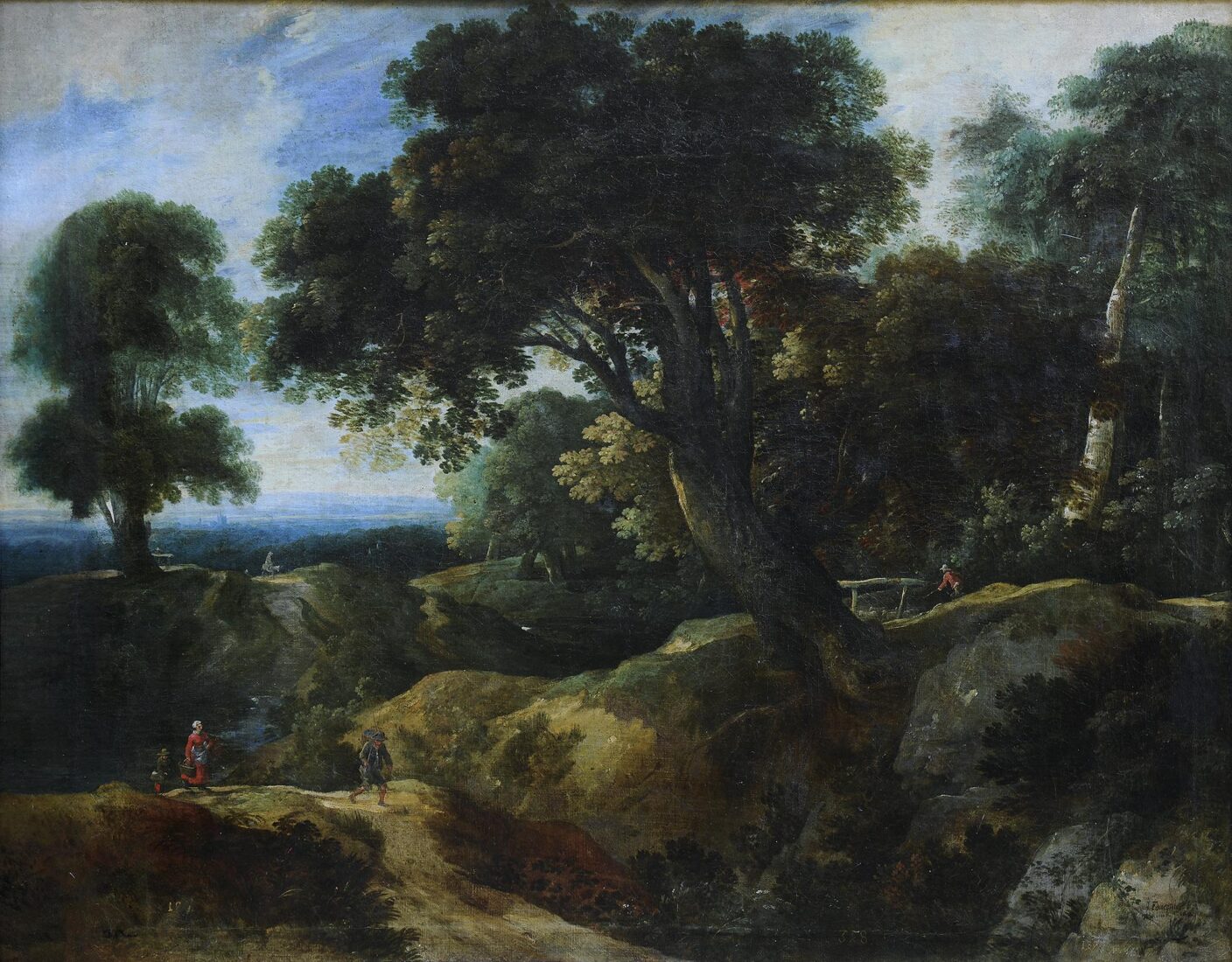We use cookies to make our site work properly, to personalize content and ads, to provide social media features and to analyze our traffic. We also share information about how you use our site with our social media, advertising and analytics partners. Read the Cookies Policy.

Fouquieres Jacques (1580/90 - 1659)
Landscape, 1627
Oil on canvas, 93 x 118 cm
Stefanos Skouloudis Bequest
Foucquieres’s work at the National Gallery presents a number of similarities to many of the landscapes by Dutch and Flemish artists in the seventeenth century and is organized in a like manner, that is, these landscapes are bordered to the left and right by trees, or rows of trees, usually interrupted in the middle by rivers or narrow lanes, while the horizon disappears into the remote depths. In the idyllic nature of these works there are scattered figures, usually small in size, of villagers, hunters or shepherds. Landscapes of this type were made, for example, by Lodewijk de Vadder, Jacques d’ Arthois, and Paul Bril. The signed work by Foucquieres at the Fine Arts Museum of Nantes, “Rugged Landscape with Hunters”, from 1620, also appears to have a connection to the work at the National Gallery. The dominance of brown tones in the foreground, green in the middleground and blue in the background, is one of the elements these two works have in common. The organization of the two landscapes also reveals certain other correspondences. Green areas of dense vegetation with tall trees alternate with heights, while in both works the landscape is interrupted in the middle: a river that diagonally traverses the landscape at the Nantes Museum has also been inserted in the landscape at the National Gallery.
The idyllic twilight landscape at the National Gallery, which hosts a shepherd and his flock, is more particularly related, however, to the prolific production of pastoral landscapes in the Low Countries during the 17th century. The production of these pastoral scenes in the Low Countries during that period is in turn connected to a more widespread tradition. Both in the art and in literature of the European Renaissance, from Italy and France to Spain and the Low Countries, and from at least as early as the 16th century, the bucolic genre boasts many examples. The “Idylls” of Theocritus and the “Eclogues” of Virgil are, of course, to be found at the commencement of this tradition, which was also particularly vital among the aristocratic circles of the period who celebrated, read and staged these bucolic scenes in theatres and masques. Rubens, Jacques d’Arthois, Paul Bril, Jan Wildens, and Gillis Neyts are all included among the many Flemish painters of bucolic landscapes. A common characteristic of many of these images was the small scale of the figures of the shepherds and their flocks, that were incorporated into landscapes of lush vegetation, usually wooded, and commonly depicted at sunset.

